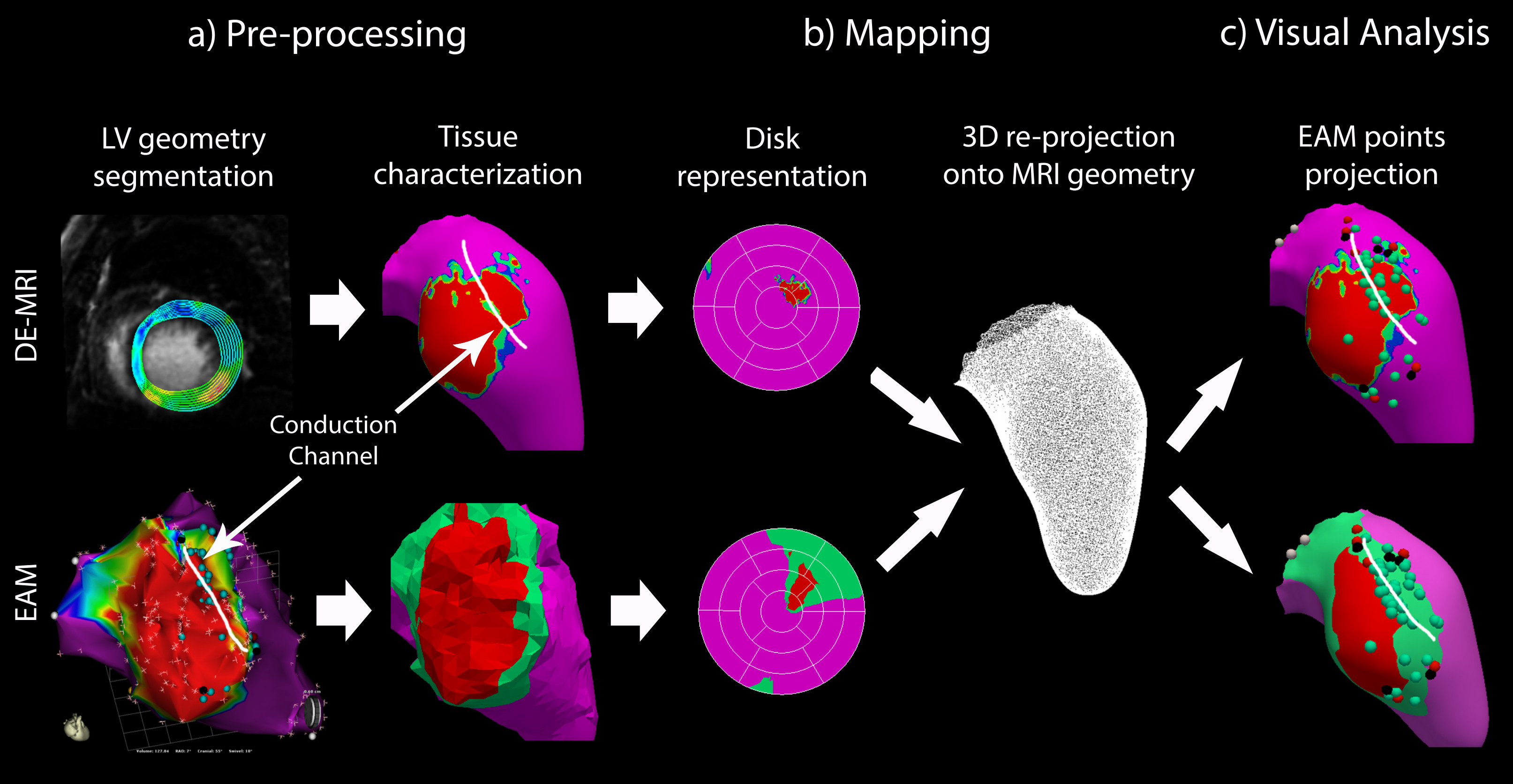New publication about the integration of electro-anatomical and imaging data of the left ventricle
New publication about the integration of electro-anatomical and imaging data of the left ventricle
Abstract
Integration of electrical and structural information for scar characterization in the left ventricle (LV) is a crucial step to better guide radio-frequency ablation therapies, which are usually performed in complex ventricular tachycardia (VT) cases. This integration requires finding a common representation where to map the electrical information from the electro-anatomical map (EAM) surfaces and tissue viability information from delay-enhancement magnetic resonance images (DE-MRI). However, the development of a consistent integration method is still an open problem due to the lack of a proper evaluation framework to assess its accuracy. In this paper we present both: (i) an evaluation framework to assess the accuracy of EAM and imaging integration strategies with simulated EAM data and a set of global and local measures; and (ii) a new integration methodology based on a planar disk representation where the LV surface meshes are quasi-conformally mapped (QCM) by flattening, allowing for simultaneous visualization and joint analysis of the multi-modal data. The developed evaluation framework was applied to estimate the accuracy of the QCM-based integration strategy on a benchmark dataset of 128 synthetically generated ground-truth cases presenting different scar configurations and EAM characteristics. The obtained results demonstrate a significant reduction in global overlap errors (50-100%) with respect to state-of-the-art integration techniques, also better preserving the local topology of small structures such as conduction channels in scars. Data from seventeen VT patients were also used to study the feasibility of the QCM technique in a clinical setting, consistently outperforming the alternative integration techniques in the presence of sparse and noisy clinical data. The proposed evaluation framework has allowed a rigorous comparison of different EAM and imaging data integration strategies, providing useful information to better guide clinical practice in complex cardiac interventions.
Authors: David Soto-Iglesias, Constantine Butakoff, David Andreu, Juan Fernández-Armenta, Antonio Berruezo, Oscar Camara
Link: www.sciencedirect.com/science/article/pii/S1361841516300081

